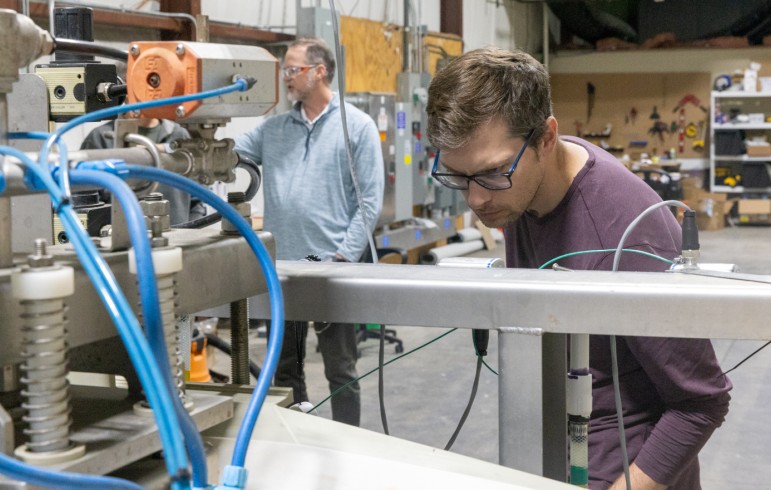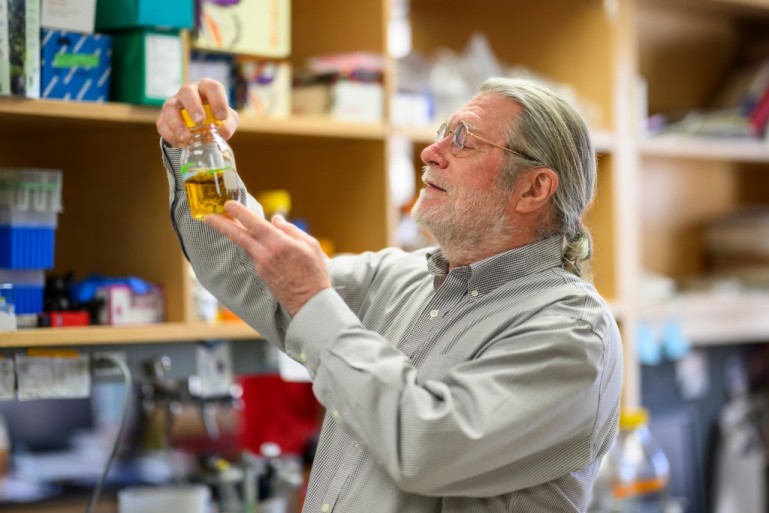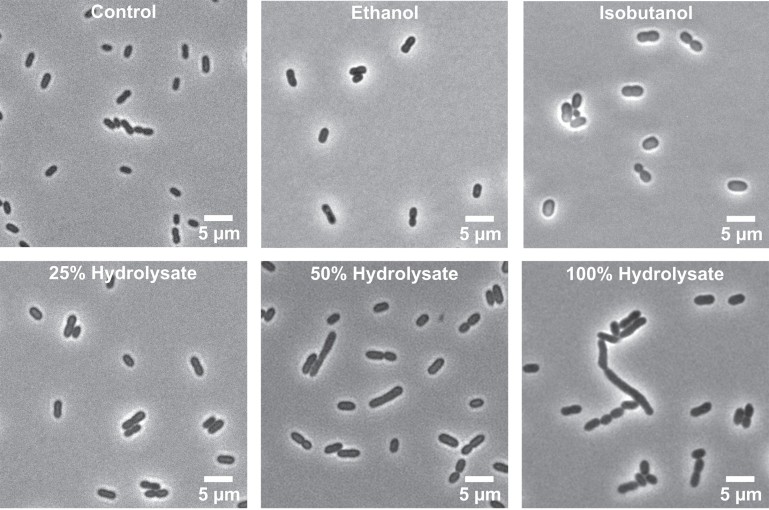When Mike Arnold thinks about solar energy, he thinks big, as in the “more than one-hundred-million-billion watts of sunlight that the Earth continuously bathes in.” But he also thinks very, very small, exploring how a one-billionth-of-a-meter thick carbon-based nanomaterial could dramatically re
MADISON – The Mid-west Energy Research Consortium (M-WERC) board of directors appointed University of Wisconsin-Madison professor of engineering physics and Wisconsin Energy Institute (WEI) director Michael Corradini chairman during their October meeting.
Scientists today disclosed a new method to convert lignin, a biomass waste product, into simple chemicals.
Researchers from the University of Wisconsin-Madison, University of Minnesota, and Argonne National Laboratory will explore ways to produce renewable plastic precursors and other substances from biomass with a recently announced $3.3 million grant from the United States Department of Energy.
On Wednesday, Oct. 29, 2014, the Wisconsin Energy Institute will host experts from around the world for a day of robust discussions on the energy challenges and opportunities facing cities.
Trisha Andrew, a University of Wisconsin-Madison assistant professor of chemistry, is one of 18 early career scientists from around the country named a Packard Fellow for Science and Engineering.
Last year when Google paid $3.2 billion for Nest, a startup that makes smart thermostats, the press joked that the internet giant would soon be posting advertisements on people’s home thermostats.



